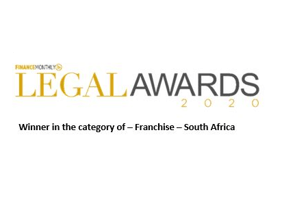
“He has extensive experience in the negotiation, preparation and drafting of commercial agreements, corporate and commercial law, transactional IP matters and the structuring of such transactions.”
Kevin obtained a BCom (Law) degree in 1996 and an LLB degree in 1998 from the University of Pretoria. In 2002 he obtained an Advanced Certificate in Taxation from the University of South Africa and in 2005 he obtained an LL.M degree in Corporate Law from the University of Johannesburg. He was admitted as an attorney of the High Court of South Africa in 2000 and joined KISCH IP in 2006.
Kevin has extensive experience in the negotiation, preparation and drafting of commercial agreements, corporate law, transactional IP matters, the structuring of such transactions and the regulatory and compliance matters involved. These agreements include IP license agreements, sale agreements, joint ventures, strategic alliances, collaboration and partnering arrangements, manufacturing, supply chain and logistics agreements, acquisition and supply terms. He also advises local and international businesses on the establishment of regional and national franchise systems and he provides strategic advice to established operations.
He offers clients a comprehensive range of commercial legal services pertaining to the negotiation, structuring and drafting of a variety of commercial transactions and agreements, ranging from transactions involving complex multinational corporations to start up enterprises. He assists clients with the negotiation, structuring and drafting of commercial agreements, franchising, mergers and acquisitions, commercial and competition law compliance, structuring of transactions and exchange control approval. He also assists with the structuring of clients IP portfolios and the offshore structuring of IP transactions, including advice on the structure and agreements which need to be put in place in order to ensure that the IP will be owned by the desired entity.
Kevin deals with all aspects of mediation, arbitration, and Court litigation, particularly in the areas of commercial and corporate litigation. He deals with commercial disputes concerning shareholder disputes, corporate governance, company acquisitions and take-overs, commercial fraud, restraint of trade disputes, enforcement of commercial contracts, claims relating to confidential information, directors’ duties, and product liability disputes.




